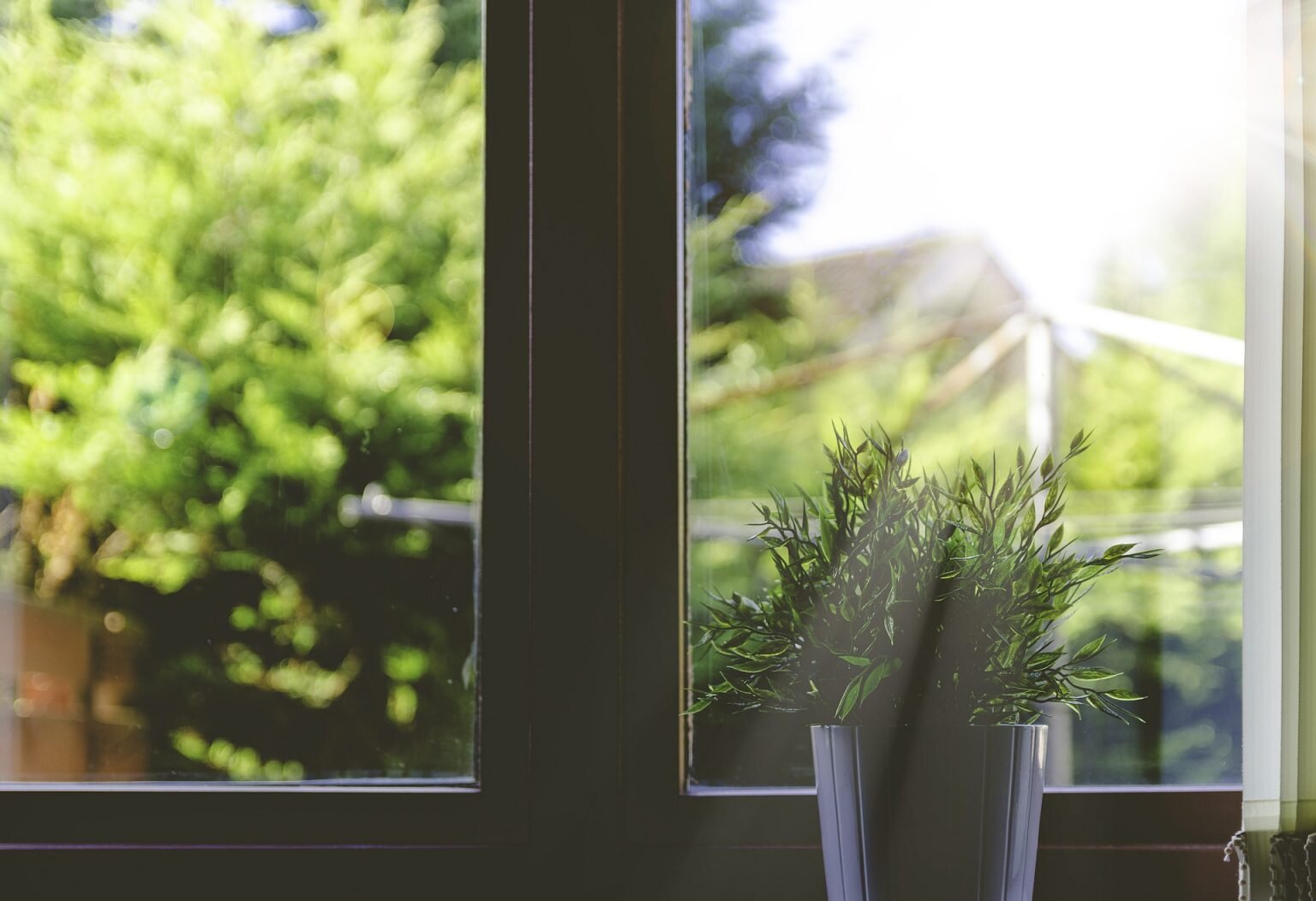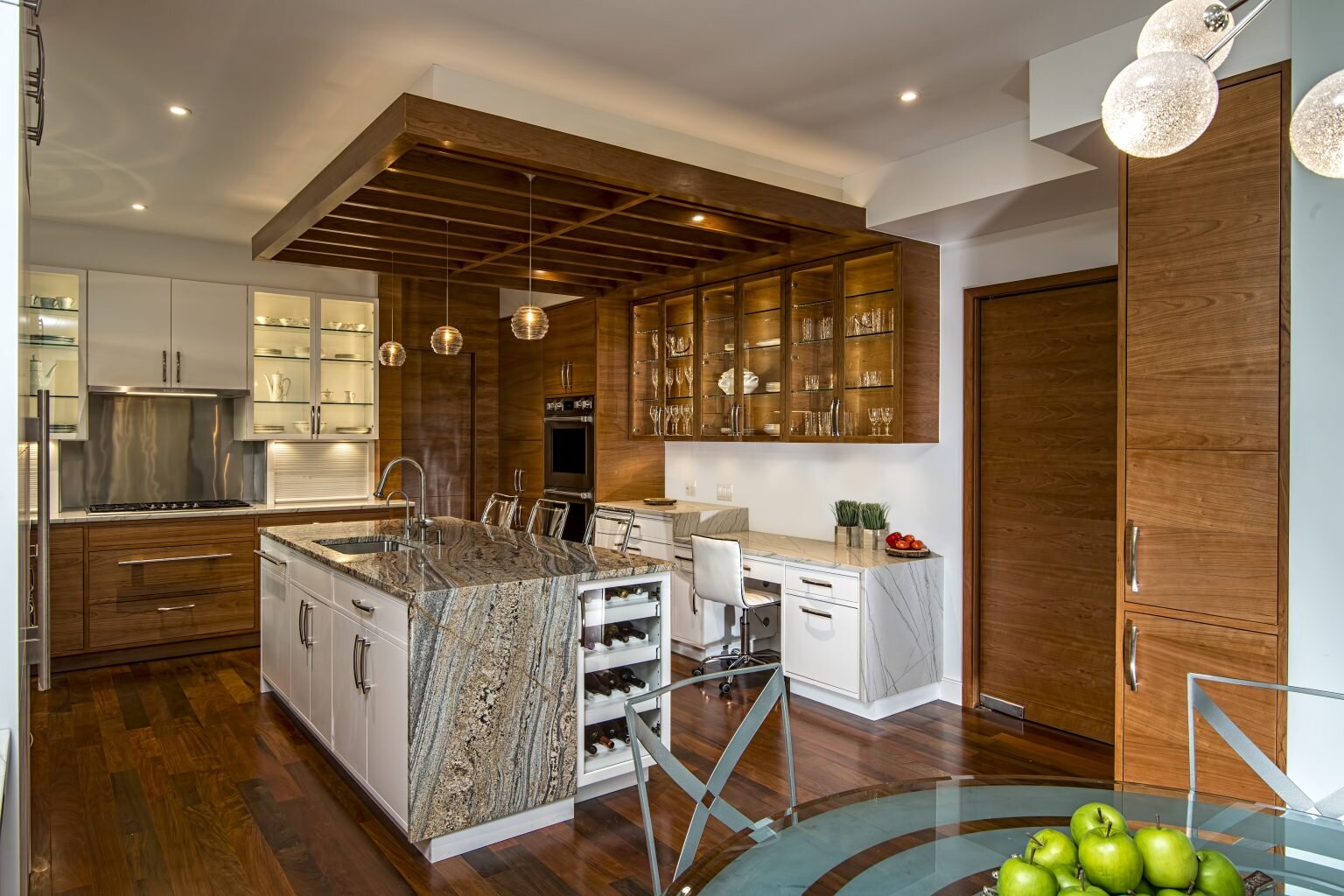From Aging-in-Place to Sheltering-in-Place
By Robert Gross, AIA, Senior Associate
It was three years ago this month when I moved my parents into a new house that I designed for them, just next door to my own. They were becoming less mobile, and while they are able to live autonomously on a day-to-day basis, we all appreciated the benefits of being a few steps away, just in case. When I started the design process for their new Aging-in-Place house, I thought about general principles of Universal Design, which accommodate all users regardless of their abilities, thereby allowing them to live independent, dignified lives. These principles include (but are not limited to):
Accessibility – providing barrier-free access (preferably with no level changes) to all spaces within the house.
Clearances – avoiding narrow passages, complex direction changes, or tight-turning areas, especially in bathrooms and kitchens.
Visual distinctions between spaces and surfaces – signaling transitions by using contrasting material or color to help orient one safely within the space.
Reach range and grasp – ensuring that all door, cabinet, and plumbing hardware and accessories can be quickly and easily identified, reached, and manipulated.
Designing for Aging-in-Place, for seniors like my parents whose circumstances allow them to remain in their homes, required additional considerations beyond Universal Design. Significantly for them, I developed a floor plan that allows for efficient movement through the most important spaces in the house with a minimum of effort. This also means my parents can be heard by each other without having to raise their voices.
Over the past couple of months, like all of us, I’ve been working at home due to COVID-19 Sheltering-in-Place restrictions. Because I see my parents every day, I’ve been observing how they have adjusted to this new reality – not leaving the house, other than to take walks around the block. Their world has become a lot more constricted. They cannot visit friends or relatives, not even my brothers and their families. We have maintained full contact with them throughout this period and that has given me the opportunity to observe and reflect on how we as architects should design houses, not just for seniors in general but for circumstances where their range of activities is even narrower than expected. In a way, I’m thinking about how the timelessness of Design for Aging-in-Place has merged with the timeliness of adapting Design for Sheltering-in-Place.
Not surprisingly, I am seeing that Sheltering-in-Place has created emotional hardships for my parents, due to their perception that they are “trapped” in their house. The fact that this pandemic reached New Jersey during the winter has exacerbated their sense of isolation from the outside world. Many studies have documented the damaging effects of people’s perceptions of isolation on their health. To combat these perceptions, I believe there are experiential qualities that we should be considering in our general approach to the design of residential spaces for seniors. These qualities reflect people’s psychological and emotional needs, and while these may seem to be common sense, they have not always been prioritized in design:
Creating spaces suffused with natural light
It is practically an axiom of design to recognize the health benefits of bright, naturally lit interior spaces. These days, I can see how my mom moves around the house, favoring different reading spots at different times of the day, subconsciously drawn to where natural light enters the house the most at those times. It is clearer to me than ever that we as architects must always be thinking about how daylight influences our behavior and emotional state. We should design residences to consciously orient certain rooms to daylight at particular times of day, but in order to promote better overall emotional well-being, homes should be suffused throughout with natural light.
Creating spaces that make people feel as if they are outside
As I noted earlier, my parents describe their perception of the limitations imposed by Sheltering-in-Place as being “trapped”. Even with a bright, spacious home and a view into a generous yard, there is this sense of being limited to an interior environment. People need to feel that they are connected to the outdoors, especially when the weather does not encourage it. My son observed that my mom would really benefit by having a greenhouse – an enclosed space that “feels” exterior. Not every home can accommodate a separate structure like that, but spaces like screened porches (with panels that can be swapped out with glazing for the winter), covered decks or terraces, or breezeways all extend the perception of the space we inhabit to include more of the outdoors.
Creating flexible spaces for both social and private use
When I designed my parents’ house, I located an intimately scaled office/library for my dad, adjacent to the living room/den, separated by a double pocket door. The idea was that if my mom wanted to read in the living room, she could still be in view and earshot of my dad, while both inhabited their own spaces. This feature has worked out unexpectedly well. My parents spend almost all their time together, but this Sheltering-in-Place period has revealed that there are definitely times when it is healthier for them to spend some time apart. This reflects a trend in residential design to build in flexibility to interior spaces. Building flexibility into spaces gives people like my parents the option to be together or apart as needed.
Creating spaces with multiple workspace opportunities
While my dad wanted the office/library to be “his” space, my mom wanted a working desk of her own in the kitchen, where she spends more of her day. I provided her this work area, complete with a computer station, printer, shelves, drawers, etc. But I have observed that sometimes my parents want to work together, and in those instances, she has no place in the office to situate comfortably (other than balancing a laptop on a sofa). As architects, we should be thinking more about how to design opportunities for multiple home-based work areas, allowing seniors to either inhabit spaces together, or to retreat to separate and private work areas when needed.
Creating the “Smart Home”
Photo by John Tekeridis
Over the past couple of months, we have all come to appreciate a fast and reliable internet connection! There has been a lot of innovation in recent years in the areas of home automation – the “smart home” technologies. Now that my parents do not go out shopping or even to routine doctors’ appointments due to their vulnerabilities, they often feel like they cannot manage their affairs as effectively as before the Sheltering-in-Place started. These “smart” technologies allow seniors to connect with family, friends, and outside services via voice command, and can even sense changes in one’s physical state or immediate environment and alert outside support and resources when services are needed (emergencies, maintenance, even shopping). Adopting these features into residential design may give seniors more confidence that they can still take care of themselves, and that they are not alone if something goes wrong.
So, what have I learned? The experience of observing my parents Sheltering-in-Place has reinforced the notion that while we architects should always strive to accommodate users’ specific functional needs, we must be just as sensitive to their psychological needs and emotional dynamics, which can have commensurate impact on their day-to-day lives. I hope that if there’s a modest silver lining to be found in this new merged reality in which we find ourselves, it’s that we may emerge from this pandemic with a more thoughtful and holistic approach to Design for Aging-in-Place, and in doing so, provide our senior population with living spaces that promote the dignity and fullness of the experience they deserve.





